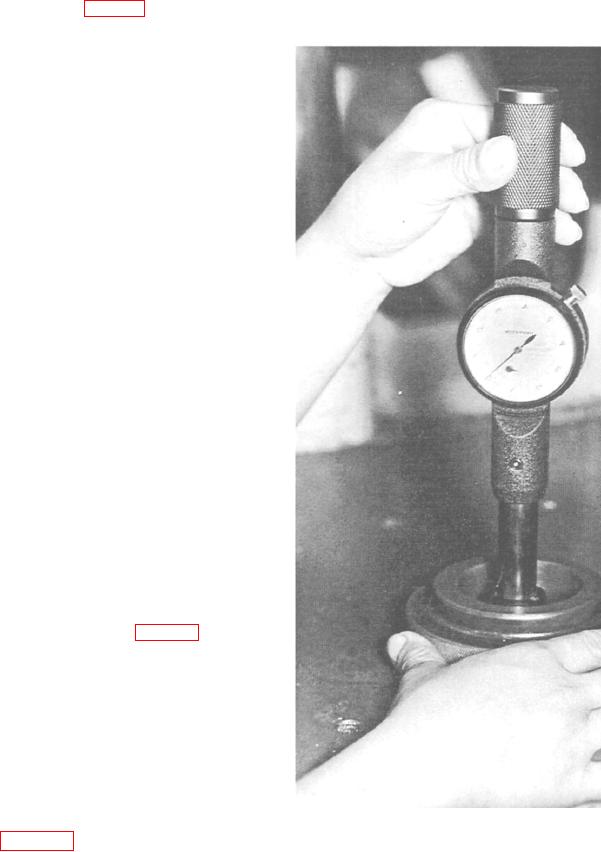
Dial Bore Gauge
The dial bore gauge is one of the most accurate
tools used to measure a cylindrical bore or check a
bore for out-of-roundness or taper, (fig. 1-11). It does
not give a direct measurement; it gives you the
amount of deviation from a preset size or the amount
of deviation from one part of the bore to another. A
master ring gauge is used to preset the gauge. A dial
bore gauge has two stationary spring-loaded points
and an adjustable point to permit a variation in range.
These three points are evenly spaced to allow accurate
centering of the tool in the bore. A fourth point, the
tip of the dial indicator, is located between the two
stationary points. By simply rocking the tool in the
bore, you can observe the amount of variation on the
dial. Most models are accurate to within one
ten-thousandth (0.0001) of an inch.
Internal Groove Gauge
The internal groove gauge (not shown) may be
used to measure the depth of an O-ring groove or
other recesses inside a bore. This tool lets you
measure a deeper recess and one located farther back
in the bore than you could with an inside caliper. As
with the dial bore gauge, you must set this tool with
gauge blocks, a vernier caliper, or an outside
micrometer. The reading taken from the dial indicator
on the groove gauge represents the difference
between the desired recess or groove depth and the
measured depth.
Universal Vernier Bevel Protractor
The universal vernier bevel protractor (fig. 1-12)
is used to lay out or measure angles on work to very
close tolerances. The vernier scale on the tool permits
measuring an angle to within 1/12 (5 minutes) and
can be used completely through 360. Interpreting
the reading on the protractor is similar to the method
used on the vernier caliper.
Universal Bevel
The universal bevel (fig. 1-13) has an offset in the
blade. The offset makes it useful for bevel gear work
28.316
and to check angles on lathe workpieces that cannot
Figure 1-11.--Dial bore gauge.
be reached with an ordinary bevel. Set and check the
universal bevel with the protractor, or another suitable
angle-measuring device, to get the angle you need.
1-12

